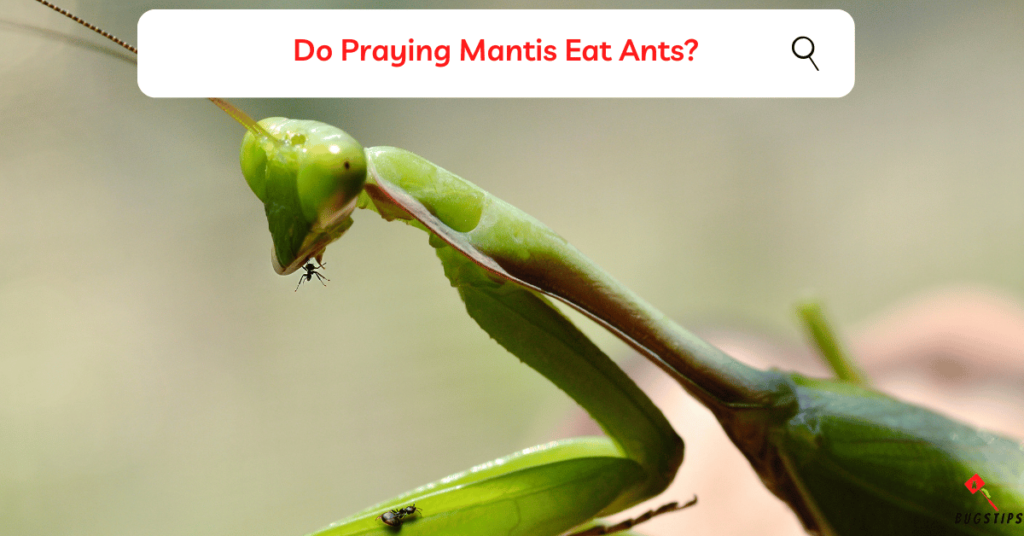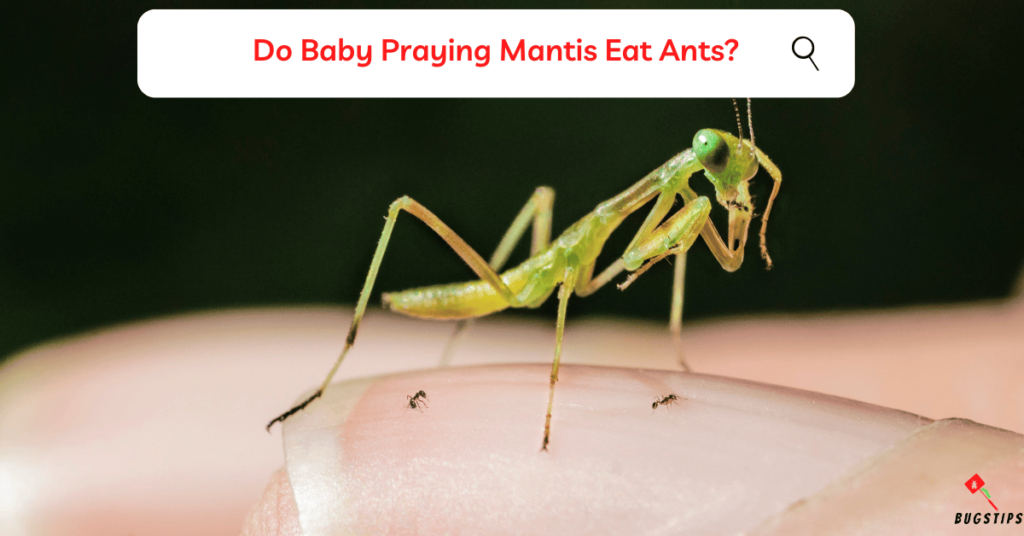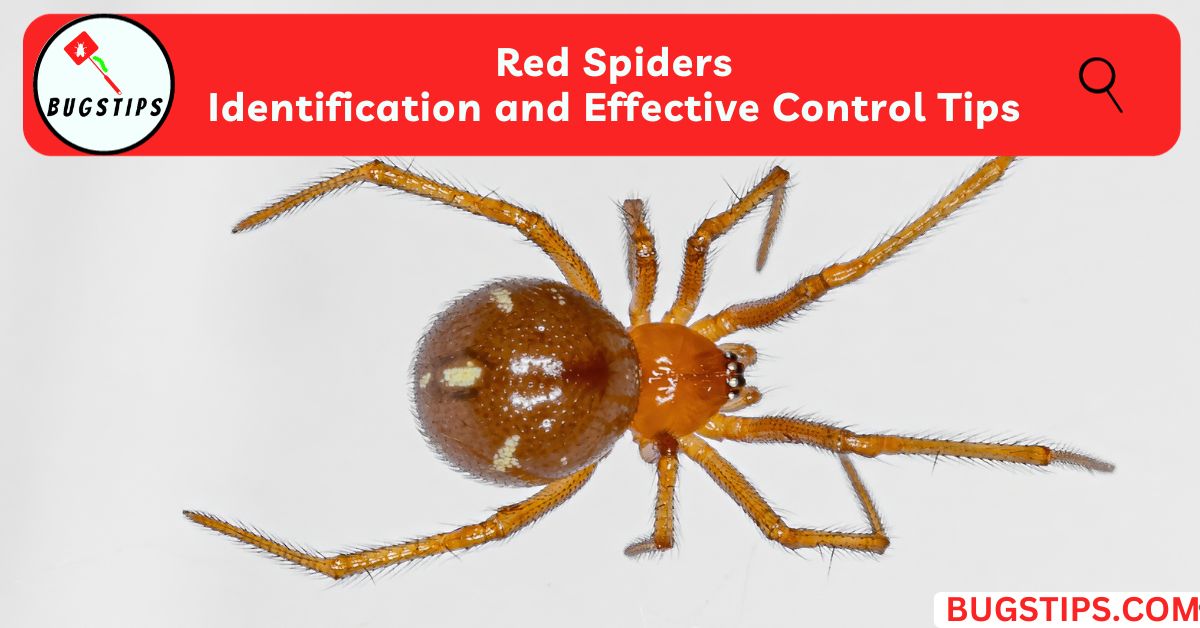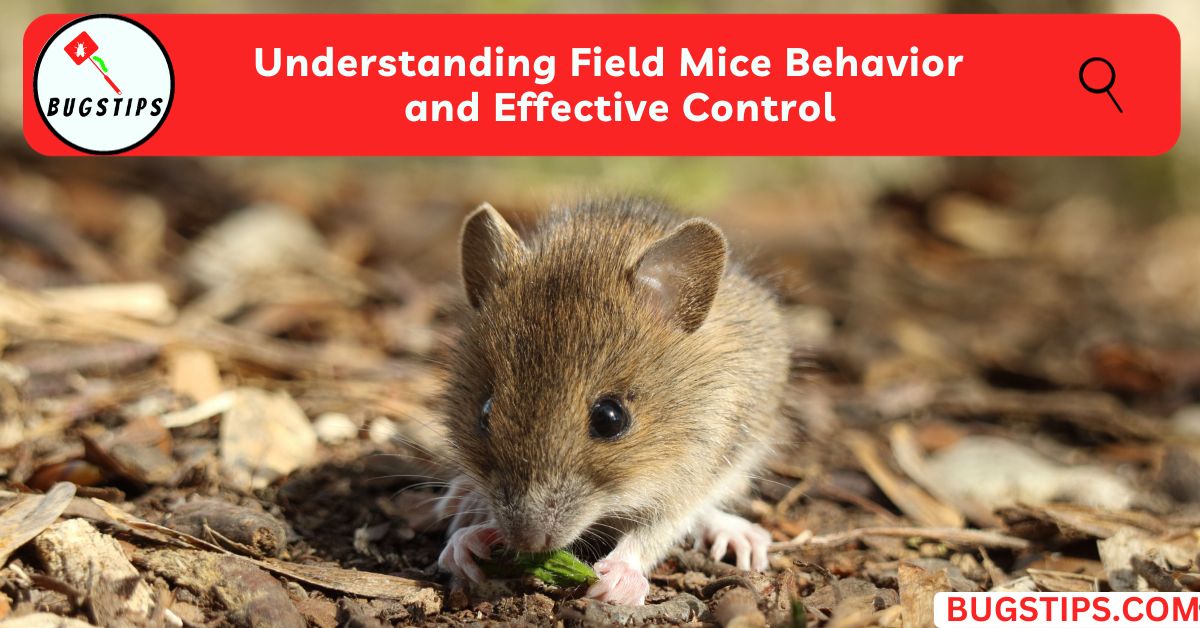This post may contain affiliate links which means as an Amazon Associate, this site may earn a small commission on qualified purchases made through links at no extra cost to you. Learn more on Affiliate Disclosure
Praying mantises are fascinating creatures that have long been admired by people for their unique appearance and predatory skills. But when it comes to their diet, there is often confusion about what these insects eat.
One question that comes up frequently is, “Do praying mantis eat ants” In this article, we’ll explore this question in-depth and provide you with everything you need to know about the relationship between praying mantises and ants.
So, if you’re curious about whether or not these insects are on the menu for praying mantises, keep reading to find out!
Do Praying Mantis Eat Ants?

Yes, praying mantises eat ants. Even though ants are not their favorite prey, mantises will still eat them whenever they get the chance.
Mantises are good at catching insects because they have great eyesight and quick reflexes. Ants are tiny and easy to catch, which is why mantises will eat them sometimes.
Whether or not a mantis eats a lot of ants depends on the type of mantis and what other insects are around. Mantises can adapt to different environments and eat different insects depending on what’s available.
So, while ants are part of their diet, mantises eat many other kinds of insects too. Different mantis species have their own favorite foods and ways of hunting.
Mantises are flexible predators, and the insects they like to eat can be different depending on the mantis species and individual.
Some mantises might like to eat carpenter ants more than others, while some may prefer different insects. What they eat can also depend on what insects are available in their environment.
Read Our Full Article on What Do Praying Mantis Eat? A Detailed Guide
Do Baby Praying Mantis Eat Ants?

baby praying mantises do eat ants. However, their diet is not limited to ants alone. Baby mantises, also known as nymphs, are more generalist predators compared to adult mantises.
They have a broader range of potential prey options and may consume a variety of small insects, including ants.
As baby mantises grow and develop, their nutritional needs change. While they may eat ants, their diet typically includes a wider variety of insects, such as fruit flies, aphids, and small caterpillars. As they mature, their feeding habits may shift, and they may start to show a preference for certain types of prey, including ants.
It’s important to note that the dietary preferences of baby mantises can vary among individuals and species. Some baby mantises may consume ants more frequently, while others may focus on different types of insects.
The availability of prey in their environment also plays a role in shaping their diet.
You May Also Like – What Do Silverfish Eat? Shocking List of Foods
How Praying Mantises Capture Ants
Praying mantises have special ways of capturing ants. These fascinating insects are skilled hunters with unique adaptations that help them catch their prey.
When targeting ants, praying mantises use their sharp vision to locate and track their movements. Once they spot an ant, they employ their incredible speed and agility to strike with precision.
Praying mantises have powerful front legs that are modified for grabbing and holding onto their prey.
To capture an ant, a praying mantis extends its front legs and swiftly snatches the ant with a strong grip. The mantis uses its sharp spines on the legs to prevent the ant from escaping. Once captured, the mantis can quickly immobilize the ant and begin feeding.
Praying mantises are ambush predators, meaning they wait patiently for their prey to come close before making their move.
They use their excellent camouflage to blend into their surroundings, making it difficult for ants to detect them. This stealthy approach increases their chances of a successful capture.
You May Also Like – 10 Long Skinny Black Bugs in House
Will Praying Mantis Eat Carpenter Ants?
Yes, praying mantises will eat carpenter ants. Praying mantises are predators that eat many different kinds of insects, and carpenter ants are one of the insects they will eat.
When they see a carpenter ant, mantises will catch it and eat it just like any other type of ant. Mantises are always looking for food, and when carpenter ants are around, they make a good meal for them.
Carpenter ants are known for their large size and wood-destroying behavior. While they primarily feed on plant material and insects, including other ants, they are not immune to predation by mantises

Do Praying Mantis Eat Dead Ants?
Praying mantises prefer to eat live prey, and they are generally not scavengers that eat dead insects. Therefore, it is unlikely that they would eat dead ants.
However, there may be some instances where mantises may consume dead ants if they are unable to find live prey or if they accidentally come across a dead ant while hunting.
Additionally, consuming dead ants may not provide the same nutritional value as consuming live ants. Therefore, while it is possible for mantises to eat dead ants, it is not their preferred food source.
Are There Any Ant Species That Praying Mantises Avoid?
While praying mantises will generally eat many types of ants, there are some ant species that they may avoid.
Weaver ants are one such species that mantises may avoid. Weaver ants are known for being more aggressive towards predators compared to other ant species.
They are also larger in size and have stronger mandibles, making them a more difficult prey item for mantises to tackle.
When encountering weaver ants, mantises may choose to avoid them or retreat to a safer location.
This is because weaver ants can inflict painful bites and stings, which can be harmful to the mantis. Thus, mantises may prefer to hunt other ant species that are smaller and less aggressive.
On the other hand, carpenter ants are not as aggressive towards mantises as weaver ants.
Carpenter ants are generally smaller in size and have weaker mandibles compared to weaver ants. As a result, mantises may be more likely to prey on carpenter ants than weaver ants.
You May Also Like – What Do Earwigs Eat? A Comprehensive Guide
Ants’ Defense Mechanisms Against Praying Mantises
Ants have evolved various defense mechanisms to protect themselves against predators, including praying mantises. These defense mechanisms help them escape or fend off potential threats.
One of the primary defense tactics employed by ants is their collective behavior. Ants are social insects that live in colonies, and they work together to defend their colony and protect themselves.
When ants sense the presence of a predator, they can quickly communicate with each other using chemical signals. They release alarm pheromones that alert nearby ants to the danger, triggering a coordinated response.
Ants also have specialized anatomical features that aid in their defense. Some species of ants have strong mandibles (jaws) that they can use to bite or pinch their attackers. These powerful jaws can cause discomfort or even injury to predators like praying mantises.
Additionally, certain ants have stingers that they use to inject venom into their enemies, causing pain or incapacitation.
Another defense mechanism employed by ants is their ability to swarm and overwhelm larger predators. When an ant feels threatened, it can release a signal that summons other ants from the colony.
This results in a swarm of ants attacking the predator collectively, which can be overwhelming and deter or distract the predator from its intended target.
Some ant species have also developed protective adaptations such as specialized body structures or behaviors. For example, certain ants have tough exoskeletons or spines that make them more difficult to handle for predators.
Some ants are even known to play dead when confronted with a threat, pretending to be lifeless to avoid detection or deter predators like mantises.
But it’s worth that not all ants have the same defense mechanisms, and the effectiveness of these tactics can vary depending on the specific ant species and the circumstances of the encounter.
Praying mantises, as skilled predators, must contend with these defense mechanisms when targeting ants, which can make capturing them a challenging task.
Related Article – Do Ants Eat Bananas: Question Answered
Can Ants Eat a Praying Mantis?
While it is unlikely for ants to eat a praying mantis, it is possible in certain situations. Ants are known to be social insects that work together to overcome prey much larger than themselves. If a group of ants were to encounter a weakened or injured praying mantis, they may attack and attempt to eat it.
However, praying mantises are typically larger and more powerful predators than ants, and they have several defense mechanisms to protect themselves.
Mantises have sharp spines on their legs that can injure predators, and some species can also camouflage themselves to blend in with their surroundings.
Additionally, mantises have the ability to fly, which can help them escape from attacking ants.
Related Article – Do Ants Eat Worms? 8 Fascinating Facts
Can I Feed My Praying Mantis Ants?
you can feed your pet praying mantis ants. Ants can be a suitable food source for mantises, especially if you have easy access to them.

However, there are a few things to consider when feeding ants to your mantis to ensure their health and well-being.
- Firstly, it’s essential to provide your mantis with live ants as prey. Praying mantises are visual hunters and are more likely to respond to moving prey.
- You can try capturing ants from your surroundings or purchase live ants from reputable suppliers that provide insects for feeding reptiles and other pets.
- When offering ants as food, it’s crucial to ensure that the ants are not harmful or toxic to your mantis.
- Some ant species, such as fire ants, can have painful bites or stings and may not be suitable prey for mantises.
- Stick to safer ant species that are commonly found in your area and avoid collecting ants from areas treated with pesticides or chemicals.
- To feed your mantis with ants, you can place the live ants into the mantis’s enclosure using feeding tweezers or other small tools.
- Allow your mantis to observe and capture the ants on its own.
- It’s essential to monitor the feeding process to ensure that your mantis successfully captures and consumes the ants without any issues.
Always provide fresh water for your mantis. Offer a small water source, such as a shallow dish with clean water or mist the enclosure to create droplets for your mantis to drink. Hydration is vital for the well-being of your mantis.
Final Thoughts
Praying mantises do eat ants, including carpenter ants, but some mantises may avoid more aggressive ant species like weaver ants.
While mantises are skilled hunters that eat a variety of insects, their specific prey preferences can vary among individuals and species.
Overall, praying mantises are valuable natural predators that play an important role in controlling populations of pests like ants.
FAQs
Do praying mantises eat carpenter ants?
Yes, praying mantises will eat carpenter ants. Carpenter ants are not exempt from a mantis’s diet and can be consumed if encountered.
Do praying mantises eat fire ants?
Yes, praying mantises can eat fire ants. However, fire ants are known for their painful bites or stings, so caution should be exercised when feeding them to mantises.
Do baby praying mantises eat ants?
Yes, baby praying mantises do eat ants. While their diet is not limited to ants, they will consume them along with other small insects.
Do praying mantises eat dead ants?
Praying mantises typically prefer live prey but may occasionally consume dead ants if they come across them. However, their hunting instincts are primarily triggered by movement.
Do ants eat praying mantis eggs?
Yes, ants are known to eat praying mantis eggs. Ants are opportunistic scavengers and may come across mantis egg cases, also known as oothecae, and consume them if given the chance.
What other insects do praying mantises eat besides ants?
Praying mantises have a varied diet and can consume a range of insects. Besides ants, they may eat flies, crickets, grasshoppers, small beetles, moths, and other small insects they can capture.
Resources – (for further reading)
The University of Maryland – Praying Mantid (Mantis)
Wisconsin Horticulture – Praying Mantids



